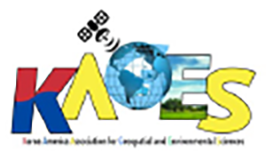Abstract
Commercial activities within a city have competed to attract people, and the interactions between these activities have affected urban dynamics. Among many services, the restaurant business accounts for a significant portion of the urban economy, with spatiotemporal variations in survivability reflecting crucial signs of changes in urban structure. This study aims to identify the patterns of spatiotemporal changes in restaurants locations to deepen our understanding of urban dynamics. Studies have utilized a variety of data sources, including social media and consumer review services, but they cover relatively short periods and focus on currently operating businesses. Public open data, however, offers potential to reveal continuous changes in urban space at micro scales since it covers an entire population with individual historic records, making it complete rather than a sample. In this study, we explore newly released public open data on licenses of restaurants in Seoul, South Korea to identify spatiotemporal dynamics of commercial activities in the city using three exploratory analytics, including hot spot analysis, trends analysis of spatial clusters, and space-time scan statistics. The results show continuous temporal changes in spatial clusters of restaurants. Hot spots remain in three traditional cores of Seoul, although each cluster has shrunk over time. Moreover, suburbs have become more risky, with significant declines and more closures than expected as well as relatively shorter lifespans. This implies a concentration of restaurants in central areas, which can further economic disparities within a city. By portraying spatiotemporal changes in restaurant entrepreneurship with public open data, this study provides essential knowledge about urban dynamics informing individual and public decision making processes, particularly associated with locating new businesses.
Recommended Citation
Jin, Chanwoo and Murray, Alan T.
(2021)
"Exploring Micro-scale Spatiotemporal Dynamics of Restaurant Entrepreneurship with Public Open Data,"
International Journal of Geospatial and Environmental Research: Vol. 8:
No.
3, Article 5.
Available at:
https://dc.uwm.edu/ijger/vol8/iss3/5
Included in
Geographic Information Sciences Commons, Human Geography Commons, Spatial Science Commons

